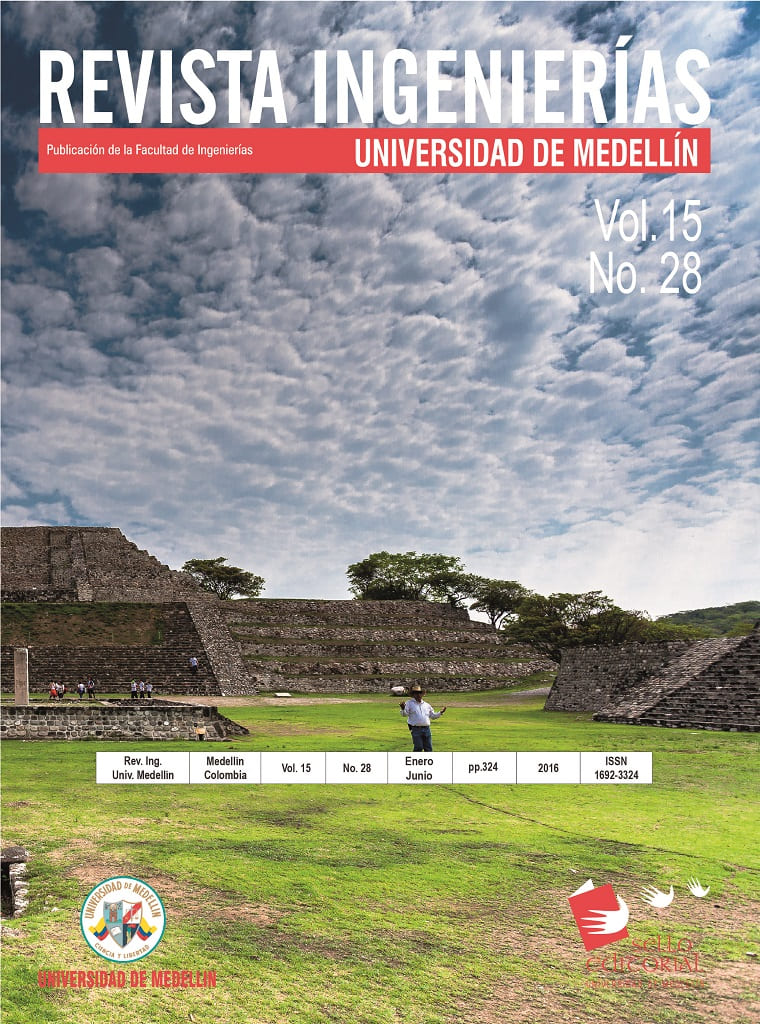Modeling of a context-aware system to support interventions in physical activities and healthy nutrition
Main Article Content
Abstract
Health systems around the world are currently facing a challenge to fight the tremendous growth of non-transmissible chronic diseases (NTCD), especially cardiovascular diseases. These diseases can be prevented if adoption of healthy habits and lifestyles are adopted by people, specifically by increasing their physical activity and having a healthy nutrition. The objective of this article is to describe the modeling process of a contextaware system with the purpose of supporting interventions to promote physical activity and healthy nutrition, duly adjusted to the characteristics of the user’s context. The main results of this article are: a) a classification model of health context and a context adaptability and personalization process model; b) a proposal of a context model for a context-aware system, which supports the promotion of physical activity and healthy nutrition; c) a reference architecture and a prototype of the system developed on such architecture, which consists of a mobile application supported by NFC and GPS technologies; and d) an evaluation of the solution usability.
Article Details
References
[2] WHO, 'Global action plan for the prevention and control of NCDs 2013-2020', [En línea], Organización Mundial de la Salud, pp. 55, acceso 11 de junio, 2015; Disponible: http://www.who.int/nmh/publications/ncd-action-plan/en/
[3] WHO, 'PromocioÌn de la salud y modos de vida sanos,' en Resoluciones y Desiciones, Octava sesioÌn plenaria, pp. 37-39, 22 de mayo de 2004 - ComisioÌn A, tercer informe
[4] M, Barrera Perdomo, 'Alimentación y nutrición en dislipidemias, síndrome metabólico y enfermedad cardiovascular,' Salud Pública Y Nutrición Humana, pp. 240, 2015.
[5] M. P. Cugelman B1, 'Online interventions for social marketing health behavior change campaigns: a meta-analysis of psychological architectures and adherence factors,' J Med Internet Res, vol. 1, p. 13, 2011.
[6] G. Cerón Ríos, 'Sistema Adaptativo para el Apoyo a Programas de Promoción de Actividad física y Alimentación saludable,' Anteproyecto de Tesis de Doctorado, Universidad del Cauca, Popayán, Colombia. Diciembre 2014.
[7] T. Lovett, 'Sensing and Interactive Intelligence in Mobile Context Aware Systems,' p. 290, Diciembre 2012.
[8] D. ANIND K, 'Understanding and Using Context,' Personal and Ubiquitous Computing, 2001.
[9] J. M. Gómez Pérez, M. Grobelnik, C. Ruiz, M. Tilly y P. Warren, 'Using Task Context to Achieve Effective Information Delivery,' p. 6, 2009.
[10] B. N. Schilit, N. Adams y R. Want, 'Context-Aware Computing Applications,' Mobile Computing Systems and Applications, pp. 85-90, 1994.
[11] N. Bricon-Souf y C. R. Newman, 'Context awareness in health care: A review,' international journal of medical informatics, vol. 76, n.º 1, pp. 2-12, 2007.
[12] C. Mettouris, y G. Papadopoulos Contextual, 'Modelling in Context-Aware Recommender Systems: A Generic Approach,' Web Information Systems Engineering–WISE 2011 and 2012 Workshops, Springer Berlin Heidelberg, 2013, pp. 41-52
[13] M. Alhamid, 'Towards Context-Aware Personalized Recommendations in an Ambient Intelligence Environment', Tesis Doctoral, Universidad of Ottawa, 2015
[14] F. Buttussi y L. Chittaro, 'MOPET: a context-aware and user-adaptive wearable system for fitness training,' Artif Intell Med, vol. 42, 2008.
[15] Shih, Chia-Hung, Wakabayashi, N, Yamamura, S, Chen y C.Y, 'A context model with a time-dependent multi-layer exception handling policy,' International Journal of Innovative Computing, Information and Control, vol. 7, n.º 5A, pp. 2225-2234, 2011.
[16] 'Engineering Research Methodology,' DigitalOfficePro, 2015. [En línea]. Disponible: http://www.slideserve.com/donnan/engineering-research-methodology. [Último acceso: 17 marzo 2015].
[17] E. Astigarra, 'Método Delphi,' Universidad Deusto, 2011.
[18] R. Galeano, 'Diseño centrado en el usuario,' Revista q, vol. 2, n.º 4, pp. 1-15, 2008.
[19] H. Ailisto, P. Alahuhta, V. Haataja, V. Kyllönen y M. Lindholm, 'Structuring Context Aware Applications: Five-Layer Model and Example Case,' HJA, vol. 0, n.º 11, p. 5, agosto 2002.
[20] C. Bauer y S. Spiekermann, 'Conceptualizing context for adaptive pervasive commerce,' European Conference on Information Systems (ECIS), p. 13, octubre 2011.
[21] O. S. M. K.-P. C. S. S. N. Salma Najar, 'Semantic Representation of Context Models: A Framework for analyzing and understanding,' N/P, vol. 1, p. 10, octubre 2009.
[22] 'Organización Mundial de la Salud,' OMS [En línea]. Disponible: http://www.who.int/topics/risk_factors/es/, 2015 [Último acceso: 20 marzo 2015].
[23] O. Coutand, 'A Framework for Contextual Personalized Applications,' Kassel University Press GmbH, noviembre 2008.
[24] R. A. Rodriguez, P. M. Vera, M. R. Martínez, D. A. Giulianelli y F. E. Valles, 'Context Aware Applications on Mobile Environments-Engaged by the use of NFC,' 2013.
[25] 'About the Technology, NFC and Contactless Technologies,' NFC FORUM, [En línea]. Disponible: http://nfc-forum.org/what-is-nfc/about-the-technology/, 2015, [Último acceso: 23 marzo 2015].





